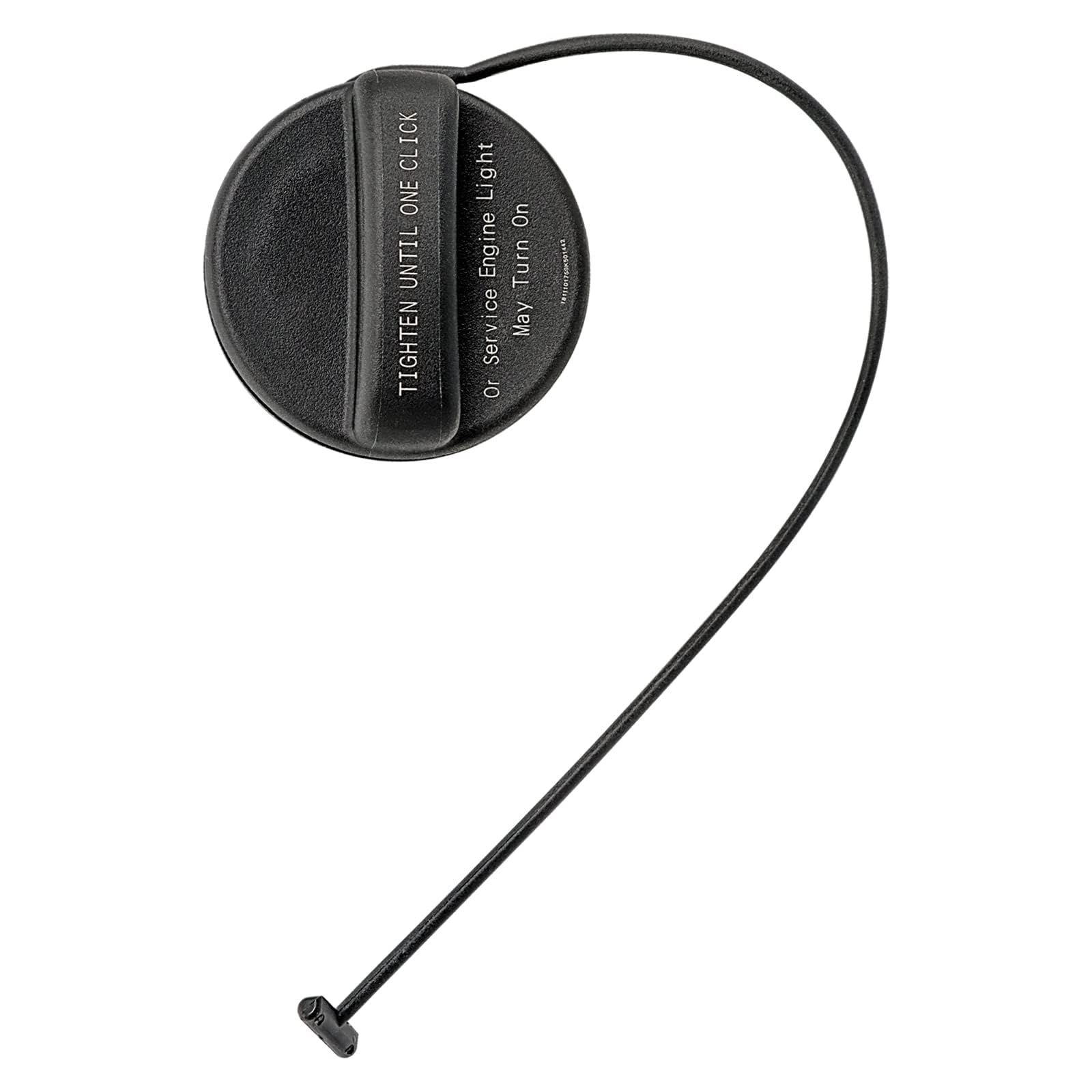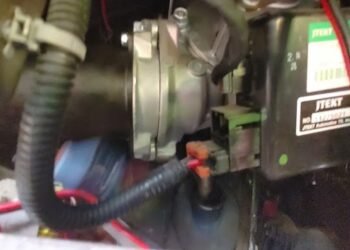If you own a Chevy Traverse, you might have noticed the check engine light flickering on or caught a strong smell of gasoline near your vehicle. These signs often point to a common but easily overlooked culprit: your gas cap.
Chevy Traverse gas cap problems can cause more than just annoying warning lights—they can affect your car’s performance and fuel efficiency. You’ll learn how to spot the symptoms, why a faulty gas cap matters, and what simple steps you can take to fix it before it leads to bigger issues.
Keep reading to protect your vehicle and save money on repairs.

Credit: espacioeslava.com
Gas Cap Symptoms
The gas cap on your Chevy Traverse plays a key role in keeping fuel vapors sealed inside the tank. When this cap fails, it causes several noticeable symptoms. Recognizing these signs early helps prevent bigger problems and saves money. Below are common symptoms that point to gas cap issues.
Check Engine Light
A loose or damaged gas cap often triggers the check engine light. This happens because the evaporative emission system detects a vapor leak. The light may stay on until the cap is fixed or replaced.
Gasoline Odor
A strong smell of gasoline near the fuel tank or around your car signals a leak. A faulty gas cap or seal lets fuel vapors escape, causing this odor. This smell often gets worse after refueling.
Fuel Efficiency Drop
Fuel vapors escaping from a bad gas cap reduce your Chevy Traverse’s fuel efficiency. The evaporative system cannot recycle these vapors back to the engine. You may notice more frequent visits to the gas station.
Cap Tightening Issues
The gas cap may not tighten properly or fail to click into place. This problem happens due to worn threads or a broken locking mechanism. A loose cap cannot seal the fuel system well.
Engine Performance Problems
In some cases, a bad gas cap causes engine problems like rough starts or stalling. These issues occur because of improper fuel vapor pressure. Fixing the gas cap often restores normal engine function.

Credit: espacioeslava.com
Gas Cap Causes
The gas cap on your Chevy Traverse plays a key role in keeping the fuel system sealed. Problems with the gas cap can cause various issues like fuel leaks and check engine lights. Several common causes lead to gas cap problems. Understanding these helps in quick diagnosis and repair.
Damaged Cap Seal
The gas cap seal is a small rubber ring that creates a tight closure. Over time, this seal can crack or harden. A damaged seal lets fuel vapors escape. This causes the check engine light to come on. It can also produce a strong gasoline smell near the fuel tank.
Worn Threads
The threads on the gas cap allow it to screw tightly onto the filler neck. Frequent use can wear down these threads. Worn threads prevent the cap from sealing properly. This leads to fuel vapor leaks and poor fuel efficiency. The cap may feel loose or fail to click into place.
Loose Or Missing Cap
A loose or missing gas cap is a simple but common problem. Sometimes the cap is not tightened enough after refueling. Other times, it can be lost or dropped. Without a secure cap, fuel vapors escape freely. This triggers the check engine light and reduces fuel economy.
Faulty Locking Mechanism
Some Chevy Traverse models have locking gas caps for extra security. The locking mechanism can fail or jam over time. A faulty lock makes it hard to remove or tighten the cap. This can cause fuel leaks or trigger warning lights. Repair or replacement is needed to restore proper function.
Troubleshooting Steps
Troubleshooting Chevy Traverse gas cap problems can help avoid bigger issues. A faulty gas cap often triggers the check engine light and causes fuel smells. Follow these simple steps to identify and fix the problem quickly.
Visual Inspection
Start by examining the gas cap closely. Look for cracks, worn threads, or a damaged rubber seal. Dirt or debris on the cap or filler neck can also cause leaks. Clean the area carefully before moving on.
Proper Tightening
Ensure the gas cap is tightened correctly. Turn it until you hear several clicks. A loose cap cannot seal the fuel system, causing error codes. Avoid over-tightening, as it can damage the cap or threads.
Diagnostic Scanning
Use an OBD-II scanner to read error codes from the engine computer. Codes related to the evaporative emission system often point to gas cap issues. This tool confirms whether the cap causes the check engine light.
Cap Replacement
If the cap shows damage or fails to seal properly, replace it with a new one. Gas caps are affordable and easy to change. A new cap restores fuel system integrity and stops leaks that affect performance.
Chevy Traverse Common Issues
The Chevy Traverse is a popular SUV known for its spacious interior and smooth ride. Despite its many strengths, this vehicle faces some common issues. Knowing these problems helps owners maintain their rides better. The following sections highlight frequent troubles in key areas of the Chevy Traverse.
Transmission Problems
Many owners report transmission slipping or delayed shifting. These issues can cause jerky rides and reduced performance. Transmission fluid leaks and worn parts often trigger these problems. Regular fluid checks and servicing can help avoid costly repairs.
Engine Concerns
Engine misfires and rough idling are common in some Chevy Traverse models. These symptoms may indicate faulty spark plugs or fuel system problems. Overheating can also occur due to coolant leaks or thermostat failure. Timely engine tune-ups keep the vehicle running smoothly.
Electrical Malfunctions
Electrical faults often affect the Traverse’s dashboard lights and power windows. Battery drain and faulty wiring cause many owners headaches. Sometimes, the vehicle’s sensors may fail, triggering warning lights. Ensuring proper electrical checks can prevent these malfunctions.
Steering System Faults
Steering issues such as stiffness or unusual noises are reported by some drivers. Problems with the power steering pump or fluid leaks reduce steering response. These faults can affect driving safety and comfort. Regular inspections help catch steering problems early.
Preventing Gas Cap Problems
Preventing gas cap problems is key to keeping your Chevy Traverse running smoothly. A faulty gas cap can cause fuel leaks, poor fuel efficiency, and trigger the check engine light. Taking simple steps can help avoid these issues and save you time and money. Regular checks and proper care keep the gas cap in good shape.
Regular Cap Checks
Check your gas cap often for cracks or damage. Look at the rubber seal to ensure it is soft and intact. A worn seal can cause leaks and let fuel vapors escape. Tighten the cap until you hear it click several times. This confirms a good seal and prevents evaporative emissions problems.
Using Quality Replacement Caps
Always use high-quality replacement caps made for the Chevy Traverse. Cheap or generic caps may not fit well or seal properly. A proper fit keeps fuel vapors inside the tank and avoids check engine warnings. Buy caps from trusted brands or your local dealer.
Proper Cap Handling
Handle the gas cap gently when removing or tightening it. Avoid over-tightening, which can damage the threads or seal. Keep the cap clean and free from dirt or debris. Dirt can stop the cap from sealing tightly and cause leaks.
Routine Vehicle Maintenance
Include gas cap inspection in your vehicle’s regular maintenance. Have a mechanic check the fuel system during oil changes or tune-ups. Early detection of gas cap issues prevents bigger problems. Regular maintenance keeps your Chevy Traverse safe and efficient.

Credit: www.youtube.com
Frequently Asked Questions
What Symptoms Does A Bad Gas Cap Cause?
A bad gas cap causes the check engine light to turn on, a strong gasoline smell, poor fuel efficiency, and engine performance issues. It may also feel loose or fail to tighten properly, leading to fuel vapor leaks and potential starting or stalling problems.
What Is The Most Common Problem With A Chevy Traverse?
The most common problem with a Chevy Traverse is transmission issues, including slipping, hesitation, and failure. Engine problems like excessive oil consumption and timing chain issues also occur frequently. Electrical and steering system faults are common as well.
What Are The Problems With Capless Fuel Fillers?
Capless fuel fillers often cause fuel vapor leaks, triggering check engine lights and reducing fuel efficiency. They may also allow dirt or moisture entry, leading to contamination and fuel system issues. Some users find them harder to seal properly, causing fuel odor or performance problems.
Does A Chevy Traverse Have A Gas Cap?
Yes, a Chevy Traverse has a gas cap. It seals the fuel tank to prevent vapor leaks and maintain fuel efficiency.
What Are Common Symptoms Of Chevy Traverse Gas Cap Problems?
Symptoms include check engine light, fuel smell near the car, and lower fuel efficiency.
Conclusion
Gas cap problems in the Chevy Traverse can cause several issues. A loose or damaged cap often triggers the check engine light. You might also notice a strong gasoline smell or poor fuel efficiency. These symptoms should not be ignored.
Check the gas cap for cracks or damage. Tighten it until it clicks firmly. If problems persist, replacing the cap is simple and affordable. Keeping the gas cap in good shape helps your vehicle run smoothly. Regular checks prevent small issues from becoming costly repairs.
















